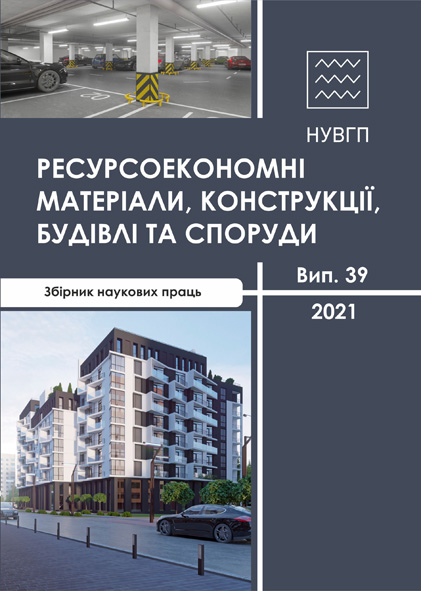BASICS OF CALCULATING THE ADHESION OF REINFORCEMENT TO CONCRETE IN REINFORCED CONCRETE ELEMENTS
DOI:
https://doi.org/10.31713/budres.v0i39.013Abstract
The current state of the creation of a reinforcement to concrete adhesion general theory is estimated. The classification and critical analysis of reinforcement to concrete adhesion models by mathematical solution of specific schemes of their interaction are carried out. Particular attention is paid to the advantages and disadvantages of analytical models: elastic, elastic-plastic, differentiated and variational.
A model and method for calculating the reinforcement to concrete adhesion in reinforced concrete elements have been developed. The model of reinforcement to concrete adhesion is based on the generally recognized dependences of the deformed solid body mechanics, expressed by a system of static, geometric and physical relationships. A criterion is proposed by which it is possible to calculate the reinforcing rod with concrete adhesion force and to assess the violation degree of their interaction at the time of normal cracks formation. This criterion, together with the extreme Fermat criterion, allows you to control the entire process (moment and place) of normal cracks stepwise formation in the tensioned zone of a reinforced concrete element.
It is recommended to calculate the forces of the reinforcing rod with tensioned concrete interaction based on the average stresses of their adhesion in the area between adjacent cracks. A universal dependence of these stresses is obtained, which is valid for any stage of a reinforced concrete element deformation. Comparison of the experimental values of the reinforcement with concrete average adhesion stresses with the theoretical values calculated for linear and nonlinear dependencies is carried out. It is shown that the function of the average adhesion stresses is nonlinear with respect to the normal stresses in the reinforcement itself.
An analytical dependence for the coefficient characterizing the profile of the reinforcing rod by the adhesion index is proposed. Its substantiation was carried out in a certain confidence interval.

